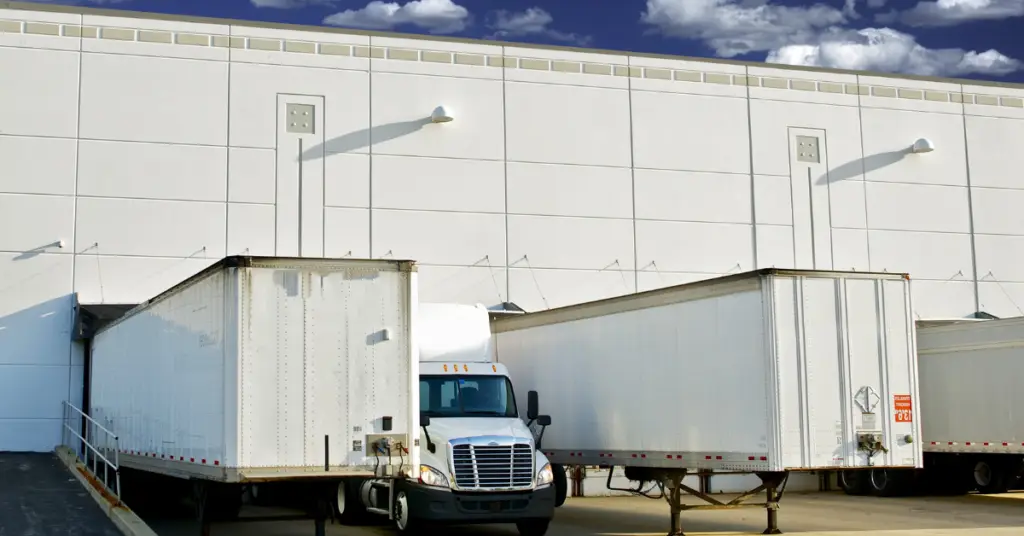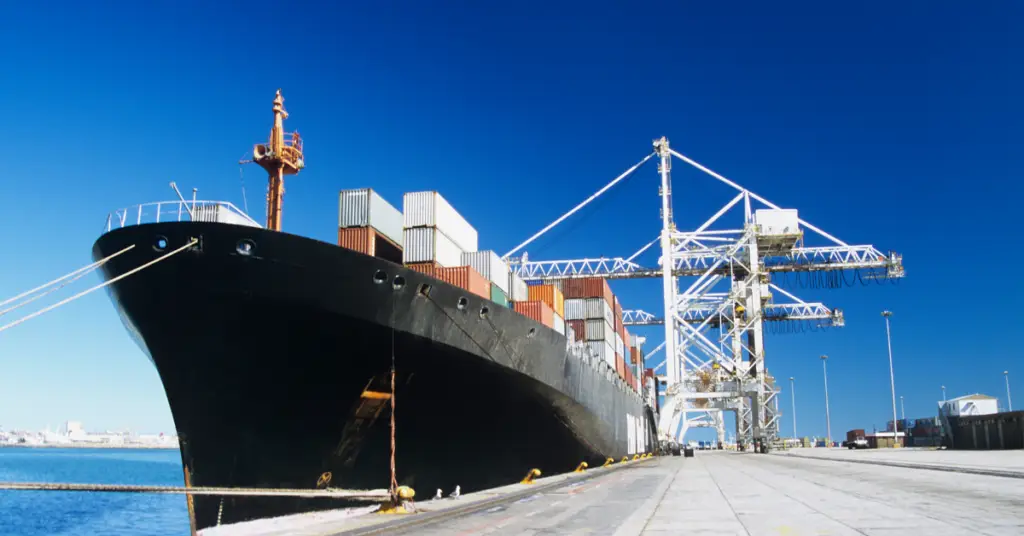Cross-docking is an innovative logistics strategy designed to enhance efficiency and streamline supply chain operations. Cross-docking minimizes delays and reduces costs by directly transferring goods from incoming to outgoing transportation with minimal or no storage time. This approach is particularly effective for high-demand and time-sensitive products. In this blog, we will explore the benefits of cross-docking, compare pre-distribution and post-distribution methods, and examine their advantages and disadvantages. Whether you’re looking to optimize your supply chain or improve delivery times, understanding cross-docking can provide valuable insights for your business. We’ll be discussing:
- What is Cross-Docking?
- Pre-Distribution vs Post-Distribution Cross-Docking
- Types of Cross-Docking
- When is Cross-Docking Used?
- Advantages of Cross-Docking
- Disadvantages of Cross-Docking
What is Cross-Docking?

Cross-docking is a logistics strategy that involves unloading goods from incoming trucks, ships, or trains and directly loading them onto outbound transportation with minimal or no storage time in between. Unlike traditional warehousing, it focuses on minimizing storage time to streamline the supply chain, reduce costs, and speed up delivery.
In this process, goods arrive at a distribution center or terminal, where they are quickly sorted and redirected to outbound transportation. This is especially useful for time-sensitive or high-demand products, helping businesses meet market demands faster and cut warehousing costs. Cross-docking is common in industries like retail, manufacturing, and distribution, particularly for companies handling large volumes and needing quick inventory turnover. Its success relies on factors such as product type, supply chain efficiency, and smooth logistics coordination.
Pre-Distribution vs. Post-Distribution Cross-Docking
There are two primary types of cross-docking: pre-distribution and post-distribution. Understanding the differences between these two approaches can help businesses determine which method best suits their needs.
| Aspect | Pre-Distribution Cross-Docking | Post-Distribution Cross-Docking |
|---|---|---|
| Timing of Sorting & Allocation | Before products arrive at the facility | After products arrive at the facility |
| Handling Time | Minimal, as goods are immediately sorted and shipped | Longer, as goods are held until orders are finalized |
| Flexibility | Low, as destinations are predetermined based on orders or plans | High, as sorting occurs after orders, allowing for adjustments |
| Efficiency | High, due to reduced time in the facility | Moderate, with potential delays during sorting |
| Planning Requirement | Requires accurate forecasting and precise planning | More adaptable to changes in demand or customer preferences |
| Best Use Case | For stable demand and predictable distribution plans | For variable demand and the need for more flexible shipping |
Types of Cross-Docking
Cross-docking can be categorized into several types based on the specific logistics operations and the nature of the goods being handled. Understanding these different types can help businesses implement cross-docking strategies more effectively.
- Manufacturing Cross-Docking: Raw materials or components are transferred directly from suppliers to the production line just in time, eliminating storage. This approach reduces inventory holding costs and streamlines production processes.
- Distributor Cross-Docking: Products from various suppliers are consolidated at a facility and then distributed to retailers or customers. It reduces transportation costs and improves delivery efficiency. Distributor cross-docking is commonly used in retail and distribution industries.
- Retail Cross-Docking: Products move directly from suppliers to stores without storage. This is ideal for perishable or high-demand goods, reducing lead times and improving availability.
- Opportunistic Cross-Docking: Products in transit are redirected to a different destination based on changing demand or market conditions. This allows for quick responses to market shifts and optimizes logistics.
When Is Cross-Docking Used?

Cross-docking is not suitable for every supply chain scenario, but there are specific situations where it can be highly beneficial. Understanding when to use cross-docking can help businesses make informed decisions about their logistics strategies.
1. Time-Sensitive Products
Cross-docking is ideal for perishable goods, pharmaceuticals, and seasonal items, cross-docking reduces storage time, ensuring timely delivery and preventing spoilage or obsolescence. It helps ensure that time-sensitive products reach their final destinations in optimal condition.
2. High-Demand Products
For products with consistent demand, cross-docking helps maintain stock levels without overloading warehouses. It enables quick transfers from suppliers to retail, avoiding stockouts.
3. Consolidation of Shipments
Cross-docking consolidates shipments from multiple suppliers, reducing transportation costs by optimizing truck space and minimizing the number of shipments.
4. Reducing Handling and Storage Costs
In cases of high handling and storage costs, cross-docking reduces these expenses by limiting time in warehouses, especially for high-volume or low-margin products.
5. Responding to Market Changes
Cross-docking provides flexibility, allowing quick adjustments to market shifts by redirecting products or modifying distribution plans, ensuring supply chain agility and maintaining a competitive edge.
Advantages of Cross-Docking
Cross-docking offers several advantages that can significantly benefit businesses and improve their supply chain efficiency. Here are some of the key benefits:
1. Reduced Inventory Holding Costs
One of the most significant advantages of cross-docking is the reduction in inventory holding costs. Since products spend minimal time in storage, businesses can reduce the costs associated with warehousing, such as rent, utilities, and labor.
2. Faster Delivery Times
Cross-docking allows businesses to expedite the delivery of products to their final destinations by streamlining the entire process. By eliminating the need for intermediate storage, products can be sorted and shipped much more quickly.
3. Improved Supply Chain Efficiency
By streamlining the flow of goods through the supply chain, cross-docking helps businesses improve overall efficiency. This can lead to better resource utilization, reduced lead times, and more accurate demand fulfillment.
4. Enhanced Product Quality
For perishable goods or items with short shelf lives, cross-docking helps ensure that products reach customers in optimal condition. By minimizing the time products spend in storage, businesses can reduce the risk of spoilage or degradation.
5. Lower Transportation Costs
Cross-docking can significantly help businesses reduce transportation costs by not only consolidating shipments but also maximizing the use of available truck space. Consequently, this can lead to fewer shipments and lower fuel costs.
Disadvantages of Cross-Docking

While cross-docking offers many benefits, it is not without its challenges. Understanding the potential disadvantages can help businesses make informed decisions about whether cross-docking is the right strategy for their supply chain.
1. High Initial Investment
Implementing a cross-docking strategy often requires a significant initial investment in infrastructure, technology, and training. Businesses may need to invest in specialized facilities, equipment, and software, as well as train employees to manage the sorting and loading processes.
2. Dependence on Efficient Supply Chain Coordination
Cross-docking relies heavily on efficient coordination between suppliers, transportation providers, and distribution centers. Any delays or disruptions in the supply chain can impact the effectiveness of cross-docking operations, leading to potential stockouts or missed delivery deadlines.
3. Limited Applicability
Cross-docking is not always suitable for all types of products or supply chain scenarios. For businesses dealing with low-demand or highly specialized products, cross-docking may not offer significant benefits.
4. Increased Complexity
Cross-docking adds a layer of complexity to supply chain operations. Businesses must carefully plan and execute cross-docking processes to ensure that products are sorted and shipped correctly. This requires meticulous coordination and communication among all parties involved.
Conclusion
Cross-docking is a logistics strategy that helps businesses streamline operations, reduce costs, and improve delivery times. By minimizing storage time and accelerating the flow of goods, the benefits of cross-docking are particularly valuable for companies handling high-demand or time-sensitive products. However, implementing cross-docking requires careful planning, efficient supply chain coordination, and investment in the right infrastructure, including inventory management software. This software enables real-time tracking of products, improves coordination, and ensures accurate inventory levels, making cross-docking more efficient. While it may not suit every business, cross-docking combined with inventory management software can optimize logistics, enhance competitiveness, and improve supply chain performance.
Related Content






